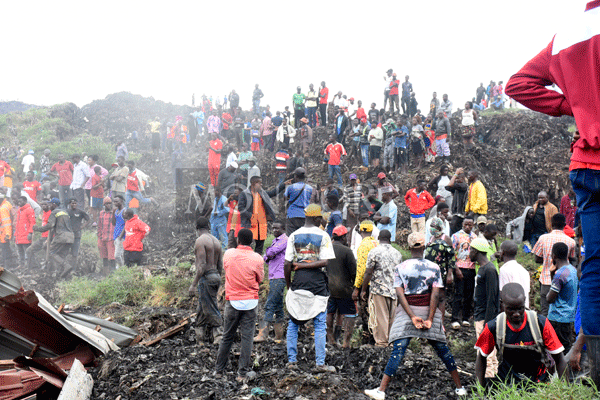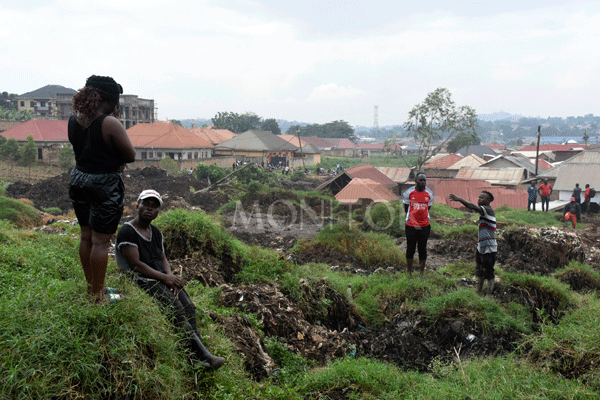
Mr Charles Onyango-Obbo
On Monday, the number of people confirmed to have died in the Saturday collapse of the massive Kiteezi garbage dump rose to 24. The ongoing search and rescue operations continued, Kasangati mayor Tom Muwonge said up to 80 children might still be trapped under the rubble.
It’s highly unlikely they will be found alive, which would bring the deaths from the Kiteezi landfill to over 100, making it the worst environmental disaster in Kampala in recent recorded history. It is also a poverty and governance calamity.
As one outlet reported it, “The Kiteezi landfill is a vast rubbish dumpsite in an impoverished hillside area that receives hundreds of garbage trucks daily. The city authority has been aiming to decommission it since declaring it full years ago’’.
“It’s also a kind of no-man’s land in the city of three million, attractive to women and children who scavenge plastic waste they aim to sell. Others have built permanent homes nearby.”
If the site had been shut down or emptied when the dangers were flagged seven years ago, most of these deaths would not have happened. And with the dangerous rubbish pile lurking uphill, city authorities should not have permitted homes to be built in the path of a possible garbage landslide lower down.
The thoughtful and vigilant activist Samwise Gamgee on X (formerly Twitter), reported that in the FY2023/24 budget, Kampala Capital City Authority (KCCA) allocated Shs4.1 billion for the maintenance of Kiteezi. Of this, Shs2.6 million was paid every day for a dead bulldozer meant to compact the garbage, and therefore it didn’t do the work.
Kiteezi is not an isolated incident. It is a harbinger of greater perils that could come from the grave environmental crimes we are committing as a country.
Millions of people in Uganda, Kenya and Tanzania depend on Nalubaale (Lake Victoria) for their livelihood, and cities like Kampala and Entebbe increasingly depend on it for their water. Many fisher folk have abandoned the polluted lake whose fish stock has declined by nearly 40 percent.
Kampala is one of the biggest dangers to Lake Nalubaale, discharging record amounts of human industrial and untreated water in the water. By 2022, some 20 million litres of used engine oil alone from about one million old vehicles in greater Kampala was reportedly being poured away and ended up sipping into Lake Nalubaale every year.
In 2019, a team of Nation Media Group (NMG) journalists from Uganda and Kenya, working with scientists from the University of Nairobi, undertook a three-month investigation of the state of Nalubaale, conducting their study on the water and in the laboratory. The results that were published on their platforms, including on NTV Uganda and Daily Monitor, were shocking.
The team collected 52 samples from river mouths and other locations on the lake, as well as effluent discharges from local factories, wastewater plants, paper mills and prisons. Analysis revealed that poisons, high concentrations of heavy metals, and pesticides were contaminating the lake, posing a risk to human health. Bacterial indicators of human waste infested 92 percent of the samples, meaning that almost the entire lake was polluted by human waste, “making the lake one big toilet”, as someone dramatically put it.
As heavy rain also leads to Nalubaale flooding as witnessed in recent years, large swaths of our land will one day soon be under a soggy layer of dangerous bacteria.
Not too far from Kiteezi, Nakivubo Channel, which cuts through Kampala, has in recent years been “modernised”; widened and layered with large culverts, silt traps, stone and concrete fillings, and other fixtures. It’s as a story, however, it doesn’t end on that happy note. The Daily Monitor reported that all that has partly served to turn it into an open sewer line because the sewerage from broken pipes and latrines ends in the channel.
In Eastern and Western parts of Uganda, people live in similar danger on hillsides, and in the valleys. With deforestation and cultivation on slopes, the soil is loosened, and the surface runoffs during heavy rains result in mudslides that have killed hundreds.
Having caused havoc on the slopes, these runoffs then lead to disaster in the valleys. There they find shallow rivers and wetlands that no longer serve their natural function of drainage because of settlement, farming, and other forms of encroachment. The result is devastating flooding. This spectacle plays out without corrective intervention from the community, village, Local Council, parish, to district leadership. In fact, often they abet it.
The Kiteezi tragedy is, therefore, a failure of politics, government, and society, and exposes the emptiness of the Opposition, whose elected leaders rule Kampala, as a shambolic “government in waiting”. It is not our proudest hour. It should signal that the next bigger catastrophe is on the horizon – unless we can be aroused by a new and urgent civic duty and do what is right.
Mr Onyango-Obbo is a journalist, writer and curator of the “Wall of Great Africans”.
X: @cobbo3





